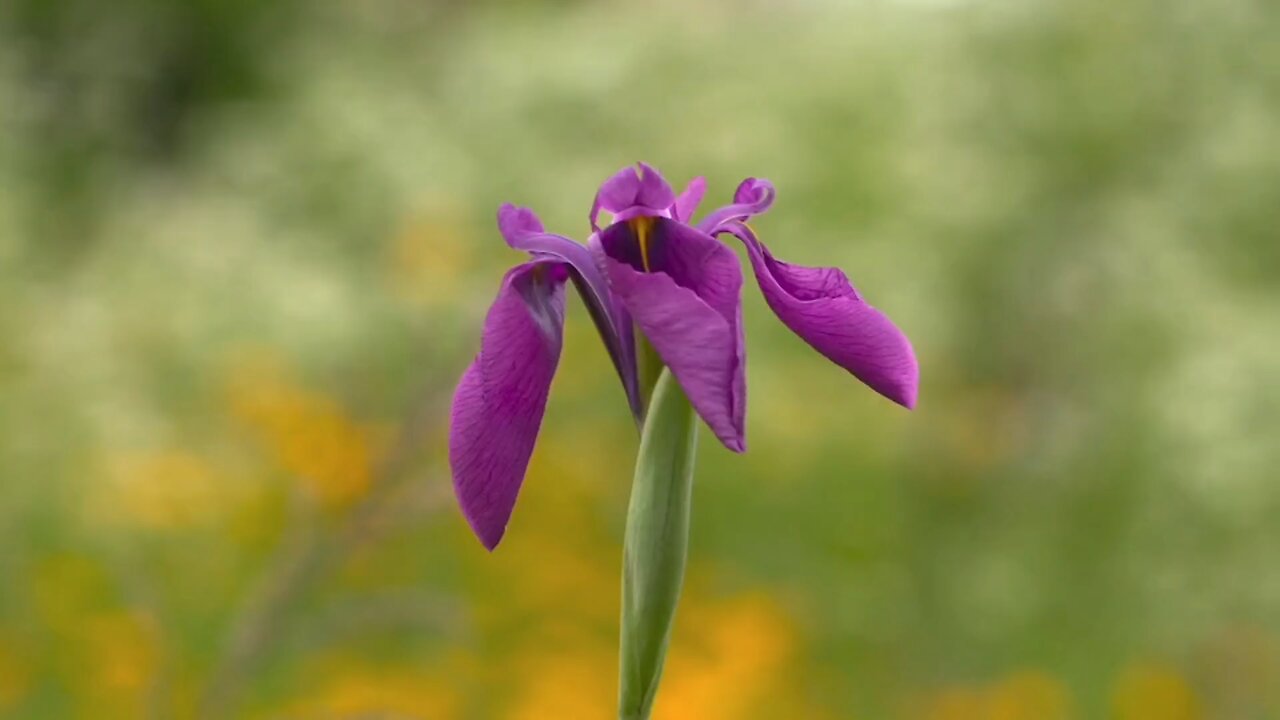Premium Only Content

"Stunning Blooms: Cultivating the Japanese Iris (Iris ensata var. ensata)"
**Iris ensata var. ensata** (Japanese iris) is a cultivar of the species *Iris ensata*, renowned for its ornamental beauty and distinctive characteristics. Here are the key details:
### **Appearance**
- **Flowers:** Large, showy blooms that are 4-6 inches in diameter. Colors range from deep purples and blues to white and bi-color combinations. The flowers often have intricate patterns and are held on tall, straight stems.
- **Leaves:** The foliage is long, narrow, and grass-like, forming a fan shape. Leaves can reach up to 2 feet in length and provide a lush, green backdrop to the blooms.
### **Growth and Size**
- **Height:** Typically grows between 2 to 3 feet tall.
- **Spread:** Can spread 1 to 2 feet wide.
- **Growth Habit:** Upright and clump-forming. It can be grown in groups for a more dramatic visual impact.
### **Blooming**
- **Season:** Blooms in late spring to early summer, usually from May to July, depending on the climate.
- **Duration:** Each flower lasts about a week, but the overall blooming period can span several weeks.
### **Cultivation**
- **Soil:** Prefers rich, moist, well-drained soil. It can tolerate slightly acidic to neutral pH levels.
- **Light:** Best in full sun to partial shade. In hotter climates, some afternoon shade can help protect the plant from intense sun.
- **Water:** Thrives in consistently moist soil, and is often grown in or near water features like ponds or streams. It can tolerate standing water but should not be waterlogged.
### **Care**
- **Fertilization:** Benefits from a balanced fertilizer applied in early spring as new growth begins.
- **Pruning:** Remove spent flowers to encourage additional blooming and prevent seed formation. Cut back foliage in late fall or early spring before new growth starts.
- **Dividing:** Divide clumps every 2-3 years to maintain vigor and prevent overcrowding. Best done in late summer or early fall after the blooming period.
### **Pests and Diseases**
- Generally resistant to pests but can be susceptible to fungal diseases like iris borer or root rot if conditions are too wet or if air circulation is poor.
### **Uses**
- **Gardens:** Ideal for water gardens, bogs, and as a border plant.
- **Arrangements:** The dramatic blooms make excellent cut flowers for floral arrangements.
The Japanese iris adds a touch of elegance and color to any garden, particularly those with water features.
-
 10:24
10:24
Zoufry
6 hours agoThe Building That Shouldn't Exist : Fort Boyard
31.3K10 -
 4:25:19
4:25:19
Grant Cardone
6 hours agoHow to Build Wealth in 2025 - Grant Cardone LIVE!
35.3K3 -
 3:03:03
3:03:03
I_Came_With_Fire_Podcast
12 hours agoEschatologist: This is EVIDENCE the Biblical END TIMES Are Coming Close
27.2K3 -
 2:55:04
2:55:04
Beyond_Bitz
3 days agoDeath Stranding - Part 3 - Mule Mercenaries & Electric Bicycles
16.4K -
 LIVE
LIVE
BBQPenguinn
4 hours ago $0.58 earnedNEW WIPE! Tasking & PVP
59 watching -
 18:11
18:11
Actual Justice Warrior
6 hours agoMamdani Is In BIG TROUBLE
35.4K53 -
 LIVE
LIVE
J0hnThunder
4 hours ago $0.43 earned🚨 Robocop: Unfinished Business ( DLC ) 🚨 || Serve the Public Trust || Part 2
48 watching -
 1:08:18
1:08:18
VapinGamers
5 hours ago $0.71 earnedTools of the Trade - Almost Box Fresh EP-01a - !rumbot !music
17.8K2 -
 LIVE
LIVE
Astral Doge Plays!
7 hours agoDonkey Kong Bananza ~LIVE!~ Let's Go Bananas in This Bananza!
42 watching -
 3:24:34
3:24:34
Sgt Wilky Plays
7 hours agoDonkey Kong Bonanza and Coffee
12.7K1